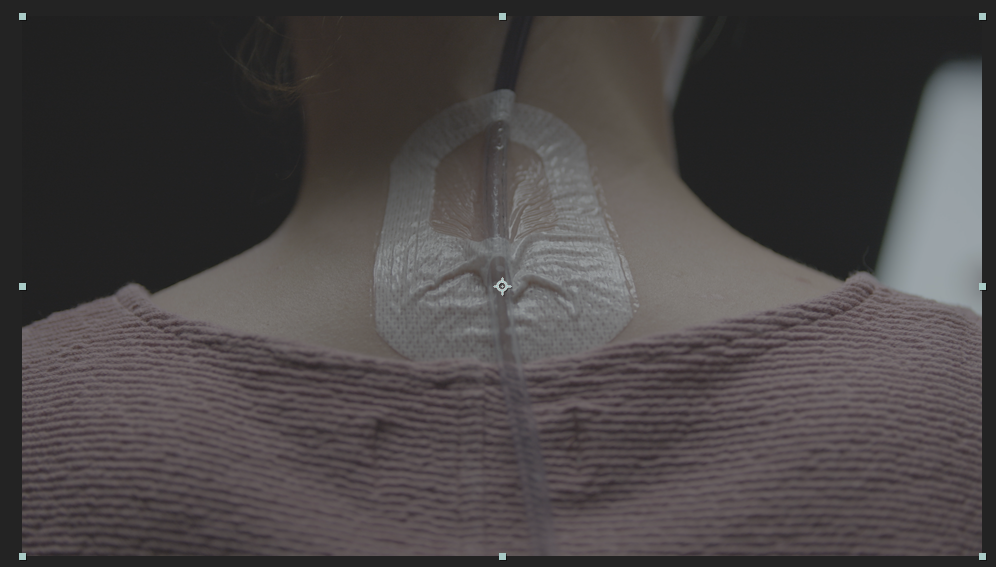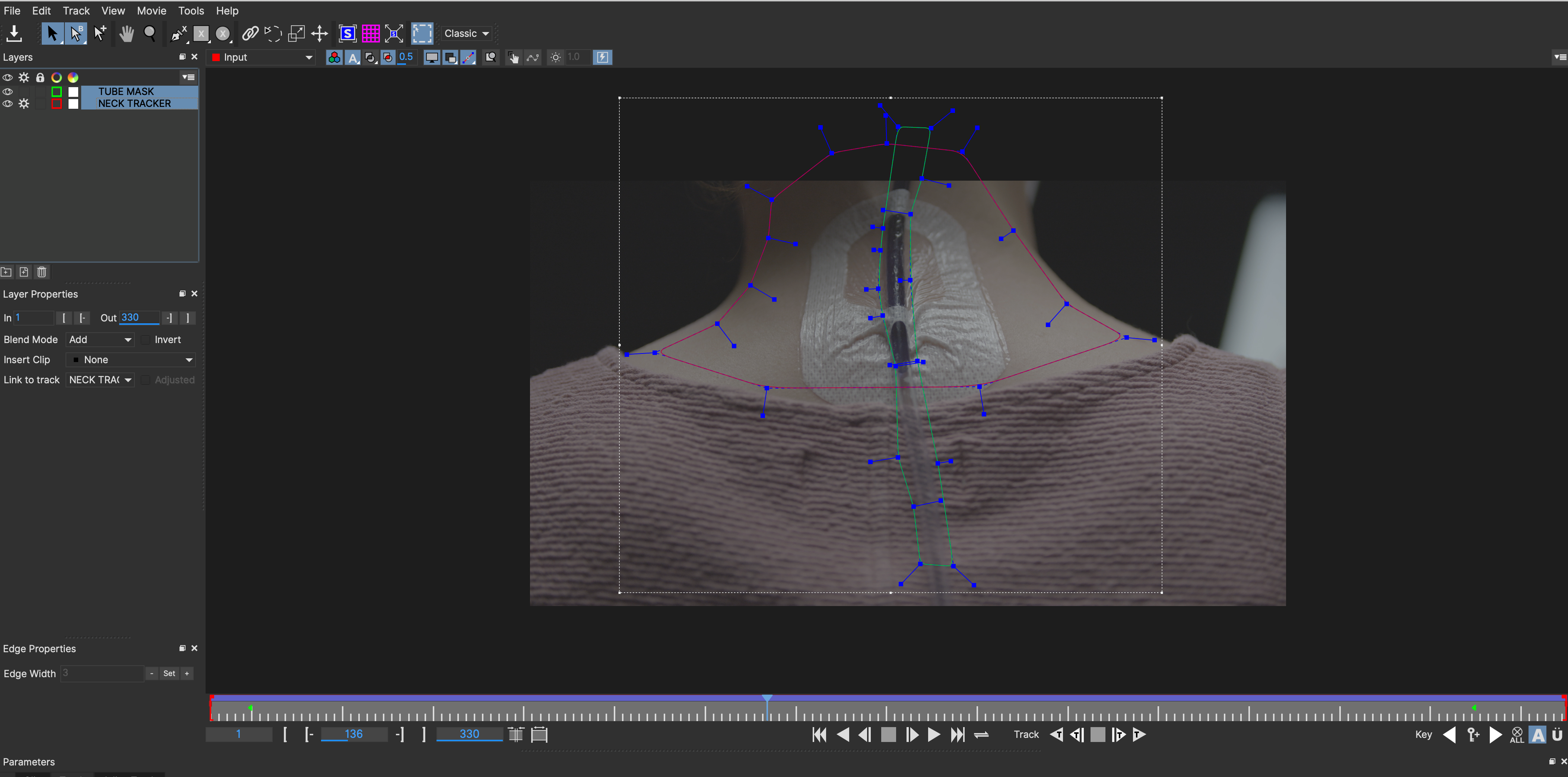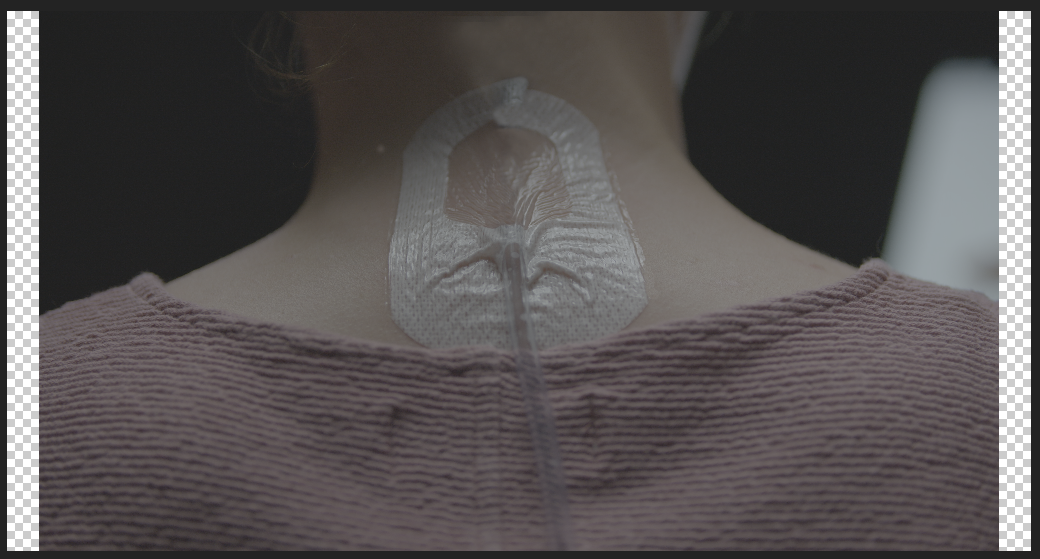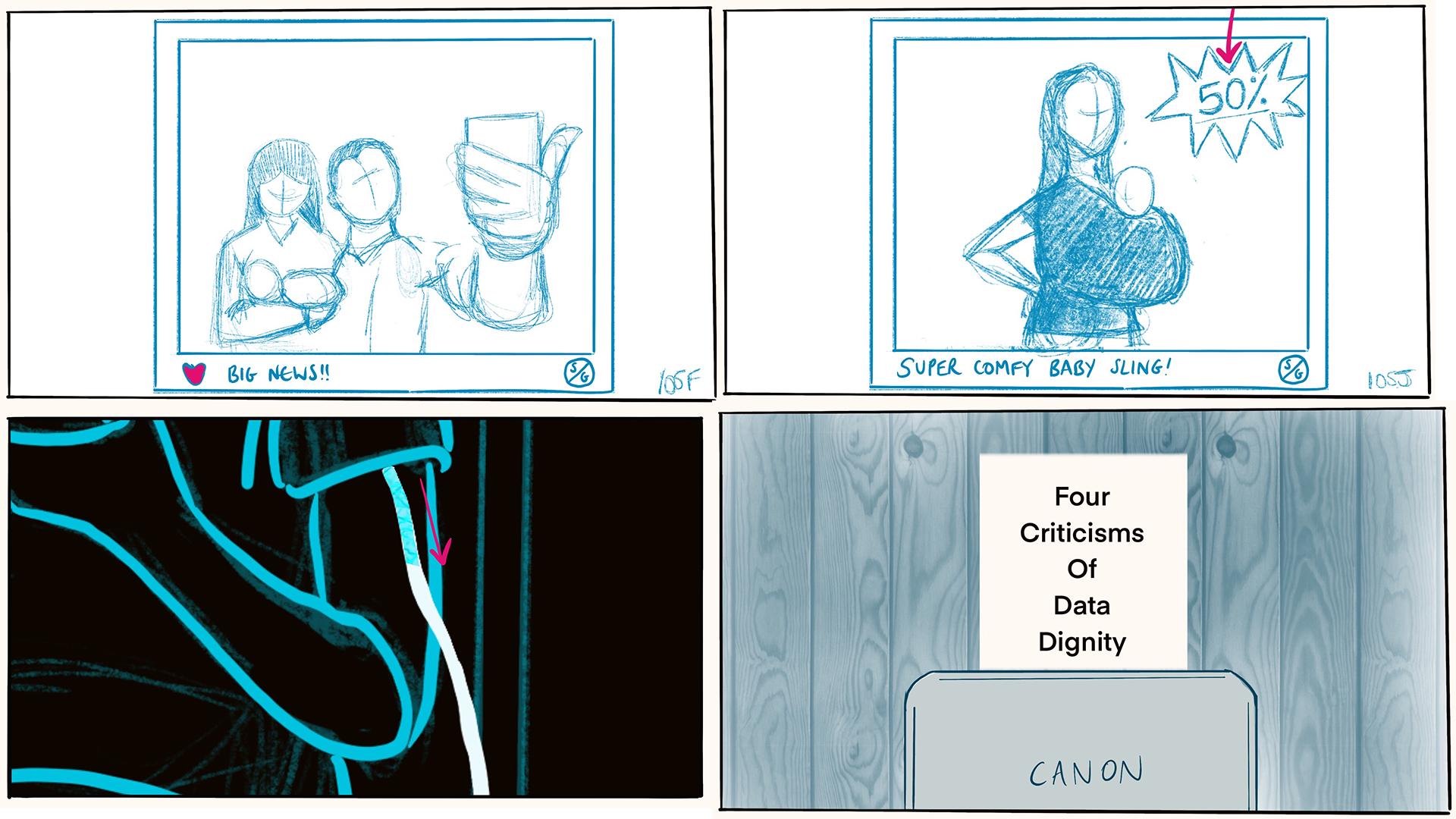This week I have answers to your questions about the making of Jaron Lanier Fixes the Internet, my new series with The New York Times.
By the way, I owe loads of you replies to emails you have sent in the last - oh, I don’t know - three weeks (!) I’m really sorry if I haven’t written back yet; the travel and flat moving, plus some other personal things knocked me off my usual schedule. If you haven’t had one, replies are coming soon, I promise.
Alright, let’s go!
How did you do that shot with the fluid coming out of the girl’s neck!? - Sarah
This shot - the big defining image of the whole show - was a mixture of practical and digital effects.
The fluid is washing-up liquid mixed with food colouring. We taped a tube to Caroline’s neck and as the camera rolled I pushed the fluid through the tube using a syringe.

On set filming an effects shot for Jaron Lanier Fixes The Internet
Straight out of the camera, you can see the fluid moving down the back of her head, plus the tubing clearly not going into her skin…

…so I created a motion tracking mask in After Effects, which tracked her neck as the camera panned down…

…and in Photoshop, created a “clean” version of her neck with the top half of the tube painted out…

Finally, it was just a case of attaching the right part of the photoshop image onto the original footage (using the motion tracking data). It came together almost perfectly first time!

How did you come up with the idea of the dark fluid coming out of that woman’s neck? - Dan
This is a story about data: who owns it, who should own it. But data is invisible - it’s an abstract concept, the only physical manifestation of which is the billions of tiny invisible electrical pulses firing through a transistor.
So it’s the old challenge of making something invisible, visible.
When we think of visualising things like this, our first thought is usually to the obvious ‘literal’ ideas: ones and zeros flying through space (like in the recent Netflix documentary The Great Hack) or something out of The Matrix.
But these have been overused to the point of cliché.
So my solution was to dig deeper, below the threshold of awareness and ask - what do I want people to feel about their data? And I wanted them to feel violated, exploited - that, after all, is the heart of Jaron’s argument: data is this really valuable thing we all possess and we’ve been duped into giving it away for free.
I brainstormed a list of valuable physical objects and ways we could watch someone seem to hand it away (a wedding ring, a wallet, a phone) and none of them carried the right connotation.
But the idea of part of your body being secreted away without your knowledge - that felt creepy.
I initially thought the fluid should be blood but, of course, we are kind of supposed to give that away for free! So my next thought was some kind of clear liquid, like spinal fluid. Clear liquids do not show up well on camera especially in low light, which is why we settled on a dark purple.
So to summarise - the idea came from asking how I wanted to audience to feel, not just what I wanted them to see.
The op-doc format gives a lot of creative freedom, so how do you approach mixing acted dramatized footage with stock with wire video, animation, and interview?- Mark
My approach is to break the story down into scenes. Scenes are the base unit of story, in fact each scene is a story, in miniature.
The question then is ‘what is this scene about?’ and ‘what sequence of images will best tell this little story?’ The atomic approach makes it easier to choose from all the different approaches at your disposal.
The side-effect is that the end result runs the risk of being a visual smorgasbord with each scene visualised differently. The rough cuts of this series were definitely like that. So, working with one of the Times’ designers, we made some last minute changes to colour, to create a unifying theme of black and purple.
That said, I don’t think a smorgasbord is necessarily a bad thing. What matters is that the visualisations add to the story in ways the words cannot do alone, and the audience are pulled through the story.
In your edit, what would you say are your main influences? - Mark
The edit was inspired by Jaron himself. As you probably noticed, Jaron is an eccentric chap, he is playful and unusual. I knew right at the start I wanted a style that reflected his personality.
So the big tonal influence in the edit was RadioLab, a science podcast famous for its creative use of music, sound design and playful editing.
I’ve listened to that show for years, interviewed its producers even, and always thought “there should be a visual version of RadioLab”.
Jaron Lanier Fixes The Internet is as close as I have come so far to making one!
The music and sound design were important. I wanted the audio to react to Jaron’s voice, hands and facial expressions. I searched out weird compositions and when I found a small segment I liked, pulled it out, looped it and layered it to create entirely new sounds.
Love to hear you talk through your thinking behind the structure. I love the ‘cliffhangers’ - the whole thing was just fascinating and effortless to watch (in a good way) - Brendan
The superstructure (across the three episodes) is very simple and I had it figured out early on: Episode 1, establish the problem, Episode 2, present a solution, Episode 3, demonstrate how that solution solves the problem.
It’s a sort of ‘thesis-antithesis-synthesis’ sequence but essentially still the dramatic structure of a piece of fiction. To paraphrase Billy Wilder: “get the cat up a tree, throw rocks at the cat, get the cat down again.”
Structuring the individual episodes was a lot harder and took a couple of weeks.
One structural device I use frequently is repetition. The story of the couple with a baby is played out three times, each time slightly differently. In complex stories like this, repetition is powerful because the audience will have a lot of information ‘saved’ from the last time you told the story, so you have space to present new layers of meaning on top.
This ‘parsing’ of information is one of the hard parts of this kind of storytelling - carefully drip-feeding information so that the audience are not overwhelmed with too much at once.
Other than that, structure is just the outcome of conflict, so I thought hard about how to challenge the audience, raise a big question early in each episode and keep raising the stakes scene by scene.
Did you script the whole thing out with Jaron before? Or was it more like an interview but you had certain lines you got him to read? - Brendan
Both actually! I wrote a very detailed script beforehand, recorded a temp voice over in my own voice, which we used to create an animatic (a rough cut which uses storyboards instead of actual footage).

Storyboards by Adam Westbrook for Jaron Lanier Fixes The Internet
Jaron and I discussed the script in detail on the phone over several weeks but, as the shooting date approached, I realised I wanted a spontaneity from him that a script would not deliver.
So at the last moment I converted the script into a long series of questions, which I asked Jaron while he looked into an Eye Direct device.
I’m very glad I did; some of the best moments (for example, when he makes a venn diagram with his fingers) were things I could never have written myself.
That said, the interview would not have been as good had I not been as well prepared, so the original script becomes this discarded and yet completely necessary part of the process, like a pencil sketch that gets erased from a finished watercolour.
I also had him record a few bridge phrases I knew I would need, things like “But!” “So,” “Here’s the thing” etc, which were really useful in the edit for connecting scenes and ideas.
Did you actually use a photocopier or are those photoshop effects? - Brendan
Yes it’s a real printer that was filmed in the Times’ studio.
More generally, the printer was a solution to a frequent problem I face making these kinds of videos: how to address the caveats. Any good argument ought to consider its critics, but in a video these things can really kill the narrative flow, so they usually require some creative problem solving.
In Operation Infektion we wrote a boxing match time-out device in each episode; in this video about the felony murder rule, I had the main character argue with himself in a split screen; and for Jaron I had the criticisms literally printed out.
It’s a fun challenge to come up with a new way of solving an old problem in each video!
Why is your credit “producer”? It feels to me what you did is very much the work of a filmmaker. Is the hierarchy in journalism different than in filmmaking? - Nathalie
The New York Times has its own in-house rules about how different contributors are credited. I would personally prefer to be credited as a writer and director as that’s what I do.
I don’t know how other journalism organisations do it, but it wouldn’t surprise me if there was a general resistance to ‘creative’ titles like writer/director/filmmaker in case the audience interpret the work as a piece of fiction.
But you only have to look at films like Vice, American Animals and The Imposter to see the boundaries between fiction and reality are being intentionally blurred now.
Ok but who needs to do what? How do you implement all this? Is it once again the citizens who need to stop working to riot all day for months to maybe see the governments move their butts? - Nathalie
The sort of change Jaron is describing is huge - it’s a rewiring of capitalism and a fundamental reimagining of what value is. It’s possibly more demanding than fixing the climate crisis (in the sense that most solutions to the global warming at least involve capitalism continuing). Therefore it is ultimately in the realm of governments to make it happen.
For us as individuals, I hope the video makes more people aware of the value in their own data and begin to demand it be accounted. Making this show has made me much more conscious about the information I would normally hand over.
Jaron Lanier Fixes The Internet is an ideas video in many ways, but we shouldn’t underestimate the power of ideas to linger, ripple, echo and grow in peoples’ minds. Jaron’s solution might not be the right one, but perhaps there’s someone out there who will figure it out after seeing the film!
Thanks for all the great questions! If you have any more, please don’t hesitate to reply to this email.
Until another Sunday soon,
